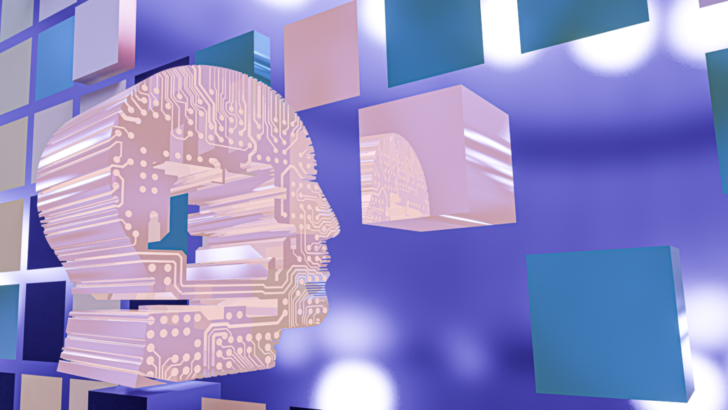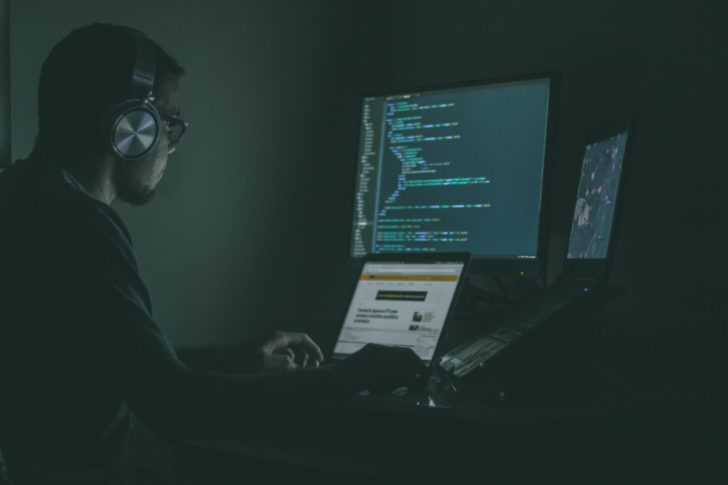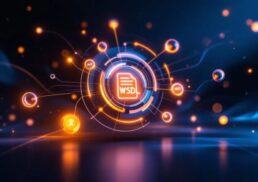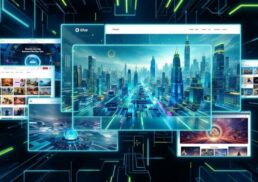In our digital age, deception lurks in every corner of the internet. Enter the world of deep fake, a growing phenomenon that threatens to redefine our perception of reality. As these AI-generated videos become increasingly realistic, it’s crucial to understand the technology, its applications, and the implications it holds for society.
In this journey, we’ll delve into the history of deep fake, explore their role in entertainment, politics, and corporate training, and discuss the challenges and opportunities of detecting and regulating this transformative technology. Together, we’ll prepare for a deep fake future that demands our vigilance and adaptability.
Table of Contents
Short Summary
Deepfake technology has been propelled by advances in AI and machine learning, with potential implications for entertainment, politics, corporate training and advertising.
Breakthroughs have enabled the development of realistic deepfakes that pose significant risks to society.
To ensure a safe future, it is essential to pursue media literacy, collaboration between industries and personal security measures.
The Evolution of Deepfake Technology

From the early days of photo manipulation to the rise of AI-generated videos, fake technology has come a long way. The term “deepfake” originates from the deep learning algorithms used in its creation. In its relatively short history, fake technology has evolved from rudimentary attempts to create fake videos to sophisticated AI and machine learning-driven productions.
Breakthroughs in AI and machine learning have played a significant role in the development of deepfakes. Researchers have harnessed the power of generative adversarial networks (GANs) to generate convincing deepfakes. As technology improves, so does the accessibility of deepfake tools, making it easier for anyone to create fake videos.
In the following sections, we’ll explore the early deepfakes and their limitations, as well as the significant breakthroughs in AI and machine learning that have propelled deepfake technology forward. We’ll also discuss the rise of accessible deepfake tools and their impact on society.
Early deepfakes and their limitations
Early deepfakes, while intriguing, were far from perfect. One example includes Salvador Dal being resurrected as a host at the Dal Museum in Florida. The creators used more than 6,000 frames from old video interviews and processed them through 1,000 hours of machine learning to overlay the source onto an actor’s face. Another example features Lynda Carter from the classic ’70s Wonder Woman TV show, placed into Gal Gadot’s big-screen Wonder Woman world.
These early deepfakes, while capturing public attention, had their limitations. In some cases, the intent was to raise awareness of the technology and its potential implications, such as the Morgan Freeman deepfake, which showcased the potential of identity manipulation and digital identity creation.
As deepfake technology advanced, so did the need for more advanced detection techniques.
Breakthroughs in AI and machine learning
Advancements in AI and machine learning have played a significant role in the evolution of fake technology. One of the key innovations is the development of generative adversarial networks (GANs), an AI system that leverages deep learning to recognize patterns in real images and generate synthetic images based on those patterns.
Innovative methods, such as the one used by Samsung’s AI lab in Moscow, have taken deepfake technology even further. They used AI trained on landmark facial features from a limited number of images to bring Salvador Dal back to life again.
As AI and machine learning continue to advance, so does the potential for even more convincing and realistic deepfakes.
The rise of accessible deepfake tools
With advancements in deepfake technology comes the rise of accessible tools that make it easier for anyone to create fake videos. Software tools like FakeApp and DeepFaceLab have made deepfake technology easily accessible for the public. This has enabled a wider spread of fake technology in society. These user-friendly tools have enabled a wider range of people to experiment with deepfakes in various contexts.
The accessibility of deepfake tools, however, poses significant risks. As more and more people gain the ability to create convincing deepfakes, the potential for misuse and the spread of false information increases. The challenge of detecting deepfakes becomes even more pressing as the technology becomes more widespread and advanced.
Deepfake Applications: The Good, the Bad, and the Ugly

Deepfakes have found their way into various aspects of our lives, from entertainment and politics to corporate training and advertising. While the potential benefits of deepfakes are vast, the risks associated with their misuse cannot be ignored. In this section, we’ll explore the good, the bad, and the ugly of deepfake applications and their impact on society.
We’ll delve into the world of deepfakes in the entertainment industry and discuss their use in political manipulation and fake news. We’ll also examine the role of deepfakes in corporate training videos and advertising, highlighting both the opportunities and the potential dangers that deepfakes present in these contexts.
As we venture through these applications, it’s essential to recognize the need for deepfake detection techniques and the importance of balancing freedom of expression with protection from harm.
Entertainment and film industry
In the entertainment sector, fakes have made a splash in movies and TV shows. Deepfake technology has been used to create fascinating mashups, such as Jerry Seinfeld in Pulp Fiction, and even to revive beloved characters, like the Mandalorian Luke Skywalker deepfake. These examples demonstrate the potential of deepfakes in the film industry, allowing for the creation of realistic special effects and unique storytelling experiences.
However, there are concerns surrounding the use of fakes in the entertainment industry. For instance, the unauthorized use of celebrity likenesses in deepfakes raises ethical and legal concerns. As deepfake technology continues to advance, it’s essential for the entertainment industry to navigate these challenges while embracing the creative possibilities deepfakes offer.
Political manipulation and fake news
Beyond entertainment, deepfakes have also infiltrated the realm of politics and fake news. In 2018, Belgium’s Socialistische Partij Anders (sp.a.) posted a fake video of Donald Trump criticizing Belgium for staying in the Paris climate agreement. Deepfakes like this have the potential to alter public opinion and spread misinformation.
The use of deepfakes in politics and fake news poses significant risks to the democratic process and public trust in the media. As deepfake technology continues to advance, it’s crucial to develop effective detection techniques and promote media literacy to combat the spread of false information.
Corporate training videos and advertising
Deepfake technology has also found a place in corporate training videos and advertising. Companies like WPP have adopted fake technology to create more engaging and personalized training videos for their employees. In advertising, fakes have been used to insert unlikely advice into the mouths of mothers of teenage girls in a Dove marketing campaign, drawing attention to the harmful effects of beauty advice propagated by influencers on social media platforms.
While deepfakes have the potential to revolutionize corporate training and advertising, they also pose risks of spreading false information and manipulating employees. As companies continue to adopt fake technology, it’s essential to strike a balance between the benefits and risks associated with its use.
Deepfake Detection Techniques
Detecting deepfakes is a crucial aspect of managing their impact on society. As deepfake technology continues to advance, it becomes even more challenging to distinguish between real and fake videos. In this section, we’ll explore the various techniques used to detect deepfakes, from visual cues and inconsistencies to audio analysis and AI-powered detection tools.
Understanding and employing these detection techniques is essential to combating the spread of false information and mitigating the potential harms caused by deepfakes. As we delve into these methods, we’ll also discuss the limitations of current detection techniques and the need for ongoing innovation in this field.
Visual cues and inconsistencies
One of the first lines of defense against deepfakes is recognizing visual cues and inconsistencies. Some common indicators of deepfakes include discrepancies between facial expressions and body movements or postures, as well as inconsistencies in the background, lighting, or shadows.
While these visual cues can be helpful in identifying deepfakes, they are not foolproof. As deepfake technology continues to advance, it becomes increasingly difficult to rely solely on visual cues for detection. This underscores the need for additional detection techniques, such as audio analysis and AI-powered tools.
Audio analysis
Audio analysis is another valuable technique for detecting deepfakes. By analysing the audio of a video, experts can distinguish between genuine and fake audio by utilizing spectrograms and machine learning models. Audio analysis techniques offer the advantage of recognizing subtle differences between real and fake audio, as well as the potential to detect deepfakes in real-time.
However, audio analysis techniques are not without limitations. They can produce false positives and may be deceived by advanced deepfakes. Despite these challenges, audio analysis remains a vital tool in the fight against deepfakes.
AI-powered detection tools
As deepfake technology advances, so too does the need for sophisticated detection methods. AI-powered detection tools utilize deep learning to identify deepfakes by examining videos and recognizing telltale signs that an image has been artificially generated. Examples of AI-powered detection tools include Microsoft’s Video Authenticator Tool, Intel’s Real-Time Deepfake Detector, and Sensity AI’s deepfake detection technology.
While AI-powered detection tools offer a promising solution to the deepfake problem, they are not infallible and can be circumvented by sophisticated deepfakes. Additionally, these tools require a substantial amount of data to train the deep learning models, which can be challenging to acquire. Nevertheless, AI-powered detection tools represent an important development in the fight against deepfakes.
Legal and Ethical Implications of Deepfakes
The rise of deepfake technology has brought with it a host of legal and ethical implications. As deepfakes become more prevalent, the need for effective legislation to address the potential harms they pose becomes increasingly urgent. In this section, we’ll explore the current laws and regulations governing deepfakes, the debate over deepfake legislation, and the challenges of balancing freedom of expression with protection from harm.
While existing legislation attempts to address the issue of deepfakes, it falls short in many respects. As the debate over fake legislation continues, it’s essential to consider the potential consequences of regulating this transformative technology and the need for a balanced approach that protects individuals and society while preserving freedom of expression.
Current laws and regulations
Currently, only a few states have laws explicitly regulating deepfake technology. In the United States, federal and state laws have been implemented to address deepfake pornography. Additionally, permission must be obtained from relevant individuals if their likeness is to be used in any deep synthesis technology.
While these laws represent a step in the right direction, they are insufficient to address the full scope of the deepfake problem. As deepfake technology continues to evolve, it’s crucial for lawmakers to revisit and update legislation to better address the potential harms posed by deepfakes.
The debate over deepfake legislation
The debate over deepfake legislation centers on the potential advantages and disadvantages of regulating the use of deepfake technology. Proponents of fake legislation argue that it’s necessary to protect individuals from harm caused by false videos and to hinder the spread of inaccurate information. On the other hand, opponents argue that fake legislation could restrict free speech and stifle artistic expression.
As the debate over fake legislation continues, it’s important to weigh the potential benefits and drawbacks of regulating this technology. Striking a balance between protecting individuals and society from harm while preserving freedom of expression is a complex challenge that requires thoughtful consideration and collaboration among various stakeholders.
Balancing freedom of expression and protection from harm
Deepfake technology presents a complex challenge in reconciling freedom of expression and protection from harm. While deepfakes can be used to propagate false information and manipulate public opinion, regulating them may also impede freedom of expression.
To strike a balance between these competing concerns, it’s essential to promote media literacy and critical thinking, collaborate and innovate within the industry, and implement personal security and digital identity protection measures. By taking a comprehensive approach to fake regulation, we can protect society from the potential harms of this technology while preserving the benefits it offers.
Preparing for a Deepfake Future
As deepfakes become more prevalent, it’s essential to prepare for a future where they are a part of our everyday lives. To effectively navigate this brave new world, we must focus on media literacy and critical thinking, industry collaboration and innovation, and personal security and digital identity protection.
In the following sections, we’ll explore specific strategies and initiatives aimed at fostering media literacy, promoting industry collaboration, and ensuring personal security in the face of fake technology. By taking proactive steps to prepare for a deepfake future, we can mitigate the potential harms of this technology and harness its potential for good.
Media literacy and critical thinking
Media literacy and critical thinking are essential tools in detecting deepfakes and understanding their potential risks and effects. By educating people on how to recognize fakes and differentiate them from authentic content, we can empower individuals to make informed decisions about the media they consume.
Promoting media literacy involves teaching individuals to critically evaluate the sources, content, and context of the media they encounter. This includes understanding the potential biases and motivations behind the creation and dissemination of deepfakes, as well as the potential consequences of sharing false information on social media platforms.
Industry collaboration and innovation
Industry collaboration and innovation are vital components of preparing for a fake future. By working together, various stakeholders, including governments, businesses, and academic institutions, can develop effective countermeasures to deepfakes and explore new applications of the technology with beneficial effects, such as in medicine and education.
Potential collaboration initiatives could include the establishment of a platform for information and resource sharing, as well as the development of a unified set of standards and regulations. Through industry collaboration and innovation, we can harness the potential of deepfake technology while minimizing its potential harms.
Personal security and digital identity protection
In addition to media literacy and industry collaboration, personal security and digital identity protection are crucial components of preparing for a deepfake future. To protect against deepfakes, individuals should employ strong passwords, use two-factor authentication, and avoid clicking on suspicious links.
Moreover, individuals should be vigilant about the information they share online and be cautious about trusting videos without verifying their authenticity. By taking proactive steps to protect their digital identities and personal security, individuals can minimize the impact of deepfakes on their lives.
For more info, visit Internet companies prepare to fight the ‘deepfake’ future.
Summary
Deepfakes represent a double-edged sword, offering both incredible potential and significant risks. As we navigate this brave new world of AI-generated media, it’s essential to educate ourselves, collaborate across industries, and take personal responsibility for our digital security. By preparing for a deepfake future, we can harness the power of this technology for good while mitigating its potential harms. Together, we can embrace the transformative potential of deepfakes while protecting our society from their darker side.
Frequently Asked Questions
Is a deepfake illegal?
It is clear that the law has not yet kept up with this new technology and the crimes associated with it, so at this point, deepfake creation and distribution is mostly unregulated. As such, creating or sharing a fake can be legally problematic, depending on its content and where you live.
Overall, deepfakes are not explicitly illegal in most states, but they may be subject to legal action depending on their content and the state laws governing their production and distribution. Apr 21, 2023.
Are deep fakes detectable?
Yes, deep fakes are detectable. In one study, the brain accuracy rate was 54 percent and their system detected with 97 percent accuracy not only whether a video was fake, but which of several algorithms had created it.
Furthermore, researchers at the University of California, Santa Barbara also took a similar approach in a recent paper.
What are the cons of deep fake?
The use of deep fakes poses a serious threat to personal privacy, security, and even global democracy. It can be used for malicious purposes such as spreading false information, manipulating public opinion, and creating misleading videos or images that discredit individuals and organizations.
Additionally, as the technology advances, it becomes harder to detect fake content, making it difficult to protect yourself against its potential harm.









